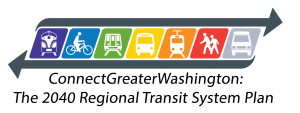Beyond Borders – Acting Regionally to Create a Financially-Sustainable Transit System (Part One)
What if taxpayers could avoid spending hundreds of millions of dollars annually on Metro’s operating subsidy? Better yet – what if Metro could pay for itself and have enough left over to fund local transportation projects? What if better using the transit system we already have could help us achieve this? This isn’t just wishful thinking – it is possible.
 (This is the first post in a series of posts that assess applying land use as a transportation strategy)
(This is the first post in a series of posts that assess applying land use as a transportation strategy)
Recently some of the Washington region’s prominent leaders issued a call to action for this region to cease competing against itself if it is to secure its economic future. Their courageous statement coincided with findings from WMATA’s Office of Planning that actually put a price tag on that promise. And it’s a doozy. In case you missed it, at the Coalition for Smarter Growth‘s Smart Growth Social recently, Shyam Kannan, Metro’s Managing Director of Planning, gave a presentation on the impact of regional cooperation on the region’s finances and specifically, what this could mean for Metro and its ridership, operating subsidy, funding partners, and taxpayers.
What he presented is the second half of ConnectGreaterWashington (CGW). As a reminder, the first part of CGW was a long range plan that identified infrastructure expansion needs across all transit operators in the region. It assumed that we would grow as the local jurisdictions have estimated in the cooperative forecast. This second part asks a different question. It challenges us to make do with the transportation system we have already built. Can the region’s growth, rather than necessitate billions of dollars in new infrastructure, be distributed differently to better utilize the roadway and transit systems we already have? What would that mean to the region, its finances, and to Metro’s operating subsidies that its funding partners pay annually?
So the study contemplates, compares, and contrasts two distinct paths. Grow the way we have been growing and build our way out of congestion. Or choose to grow around our existing infrastructure and use it to its maximum capacity. In the coming weeks, we will be posting the detailed analysis here on PlanItMetro. It’s lengthy and wonky, so be prepared for a series of in-depth posts. Read more…


Recent Comments